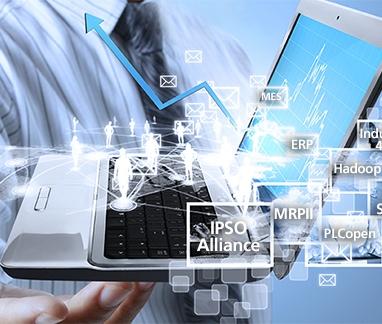
As in the Internet of Things (IoT) (the online network where devices are talking to devices, appliances and machines), devices communicate with one another, it is going to create that digitally connected environment which is not only innovative and promising but also slated to grow and connect 50 billion devices by 2020. CIOs across large enterprises intend to reap the benefits of this new jargon and find it helping in driving automation and the new technologies such as big data, information security, cloud are seem to be having positive influence on IoT.
IoT is said to help in automation
IoT is definitely helping companies extend new services, augment output and efficiency, and solve serious problems. This is largely right for industrial automation with the Internet-enabled machines that are helping the manufacturing sector meeting better quality standards and better customisation.
IoT is enabling machines and automation systems to securely connect device to device, enterprise and to the rest of the supply chain.
Most CIOs have ensured to automate their supply chain process to track vehicular movement and also product manufacturing phases and roll out. Any new technology has to go through the pilot and so is IoT. So, most CIOs are looking at adopting IoT in the coming days, and will start testing it under different business domains.
Sharat Airani, Director-IT and CSO, Intellinet Datasys says, “IT decision makers are certainly looking forward to adopting IoT. There is a lot of scope in most of the enterprises as it paves the way for automation that can help the business.”
Efficient utilisation of the IoT can provide deep insights, combined with a comprehensive security framework, effective security controls and a flexible security architecture, that can help enterprises reduce risk and improve security.
Citing an example, Airani points out, “It’s 10pm. Do you know how your refrigerator is performing and being active? IoT helps in doing that!”
Airani says, “At individual level; what we could use is a refrigerator that refuses to let us open its door when it senses that we are about to consume our fourth ice cream or pudding or snack in two hours.”
TG Dhandapani, CIO, TVS Motors, says, “IoT is a reality as the benefits are high and the solution to use is simple.”
Dhandapani has identified 20+ projects within the company which can leverage IoT.
“Using IoT and analytics several implicit practices can be made explicit by supported logical data. Quality assurance and traceability will improve manifold and manufacturing can be automated using IoT and analytics,” adds Dhandapani.
What can be the potential benefits of IoT?
Individual and enterprise benefits
Ensuring continuous availability of these devices is a challenge because these embedded systems lack security. But the data Tsunami combined with big data and security analytics can benefit in different ways, if treated properly.
The second point is how can any enterprise explore to how quickly patch vulnerability —the way out would be identification, implementation of security controls and ensuring rapid demand in bandwidth requirement.
"Enterprises are already talking about this, but in a different context. We call it ’M2M’. Probably in my personal view, this is a first step towards IoT. As it referred in cloud, virtualisation etc.” adds Airani.
Challenges that CIOs need to address
Securing the Internet of Things poses new challenges such as:
- Invasion by the hackers
- Threats and breaches via smartphones
- Infested malware
- Intrusions
The familiar concerns around IoT will be security, privacy and ensuring reliability, while other problems would call for serious debates and discussions.
a) Setting protocol, standard
Many technical barriers will need to overcome as IoT pushes the boundaries beyond network protocols. For example, IPv6 must become a reality as the number of connections moves from billions to trillions.
b) Powering up the devices
Finding energy sources for powering the huge number of miniature (even microscopic) devices. To overcome these challenges, government organisations, and standard bodies, businesses and even citizens will need to come together in a spirit of cooperation.
c) Lack of IoT skill set
Lack of IoE/IoT skills and knowledge among employees and management is viewed as the biggest obstacle to using the IoT more extensively. To address these gaps, organisations are training staff and recruiting IoT talent, raising the potential for IoT talent wars.
d) Privacy issues
Others are hiring consultants and third-party experts, seeking to build knowledge and identify successful IoT business models. While reliability of networks is a major driving factor in IoE, privacy gets to be a key challenge because we will have to follow certain regulations prescribed by TRAI for tracking our employees.

 In
In
Add new comment